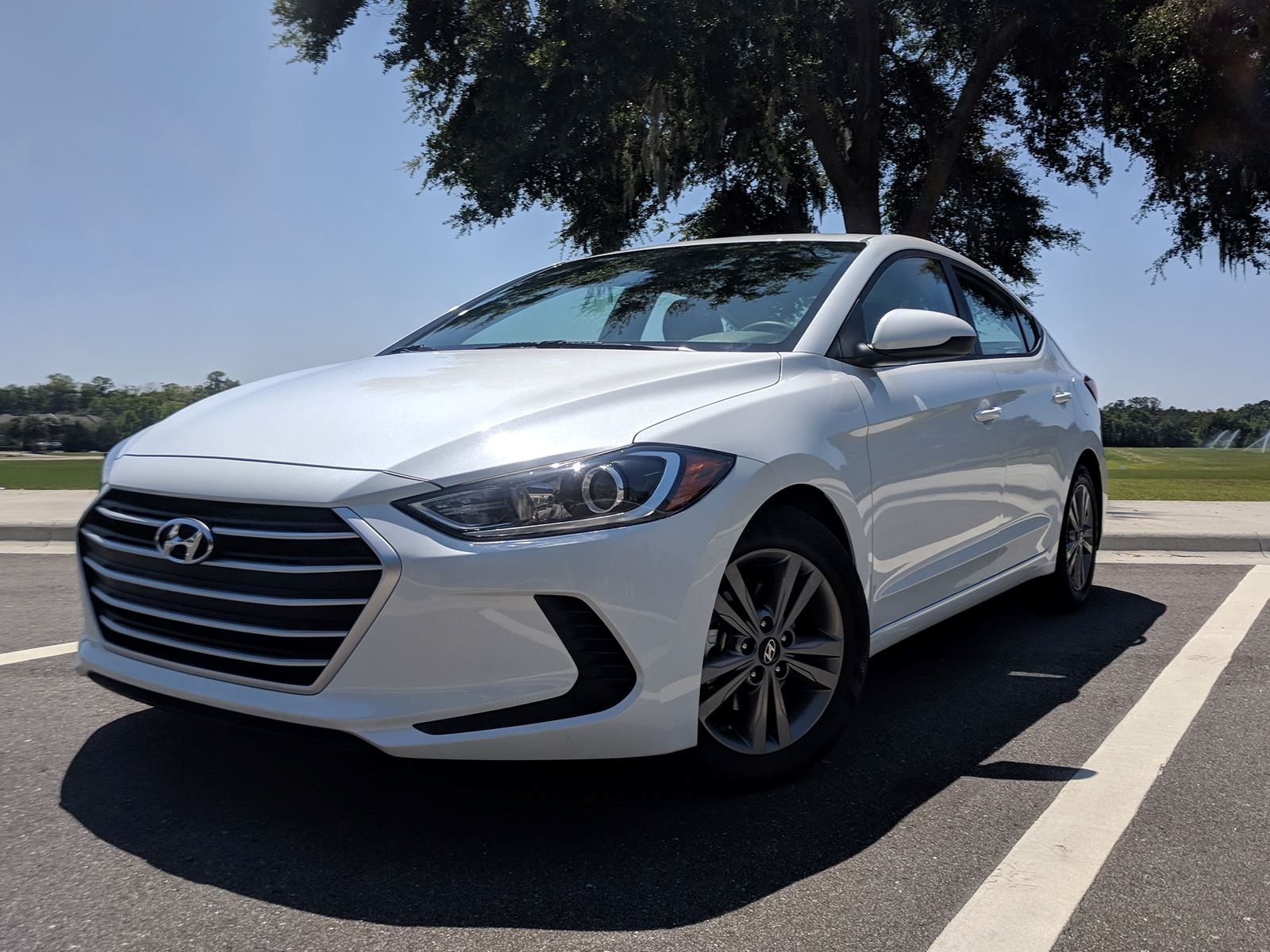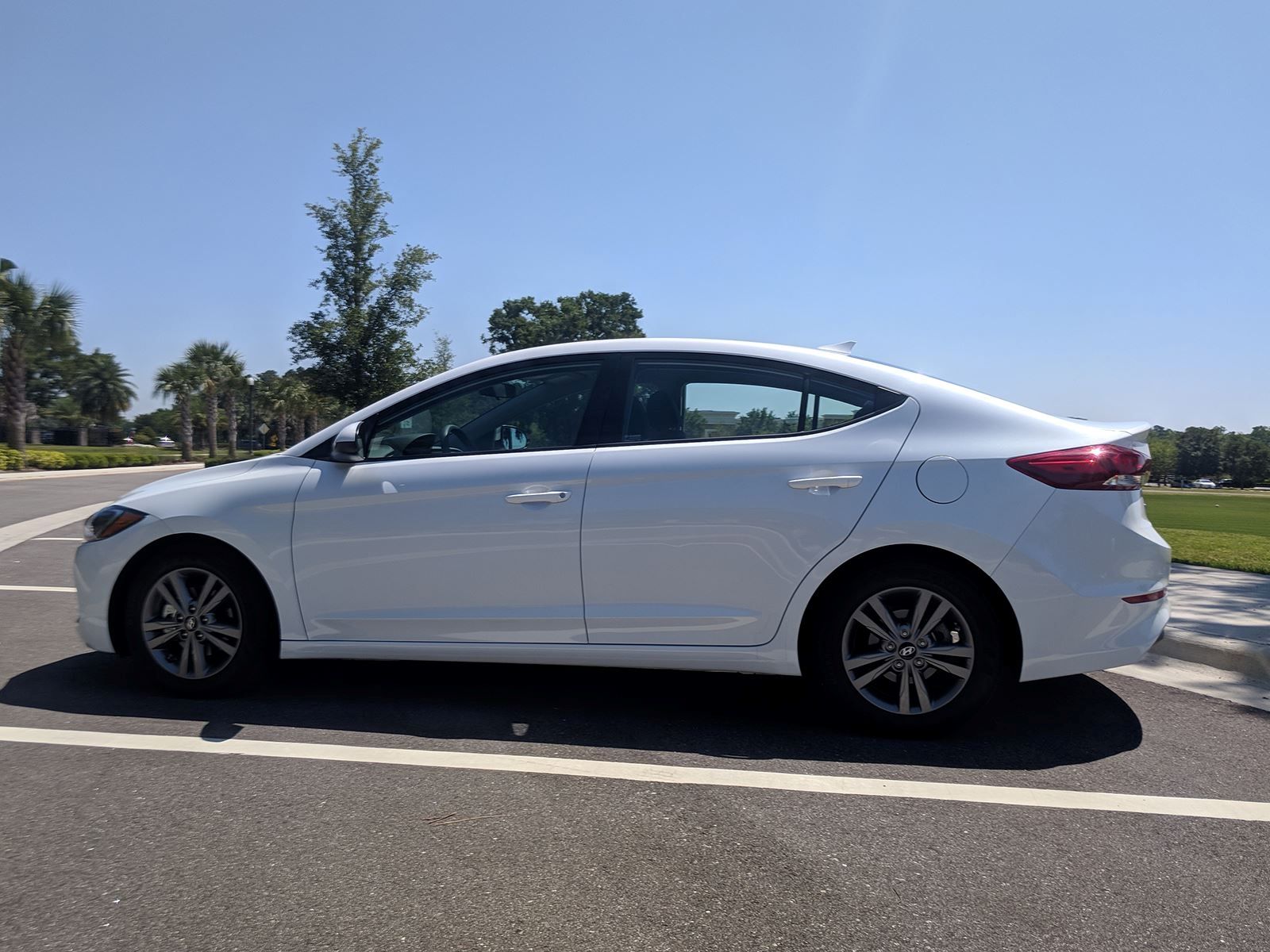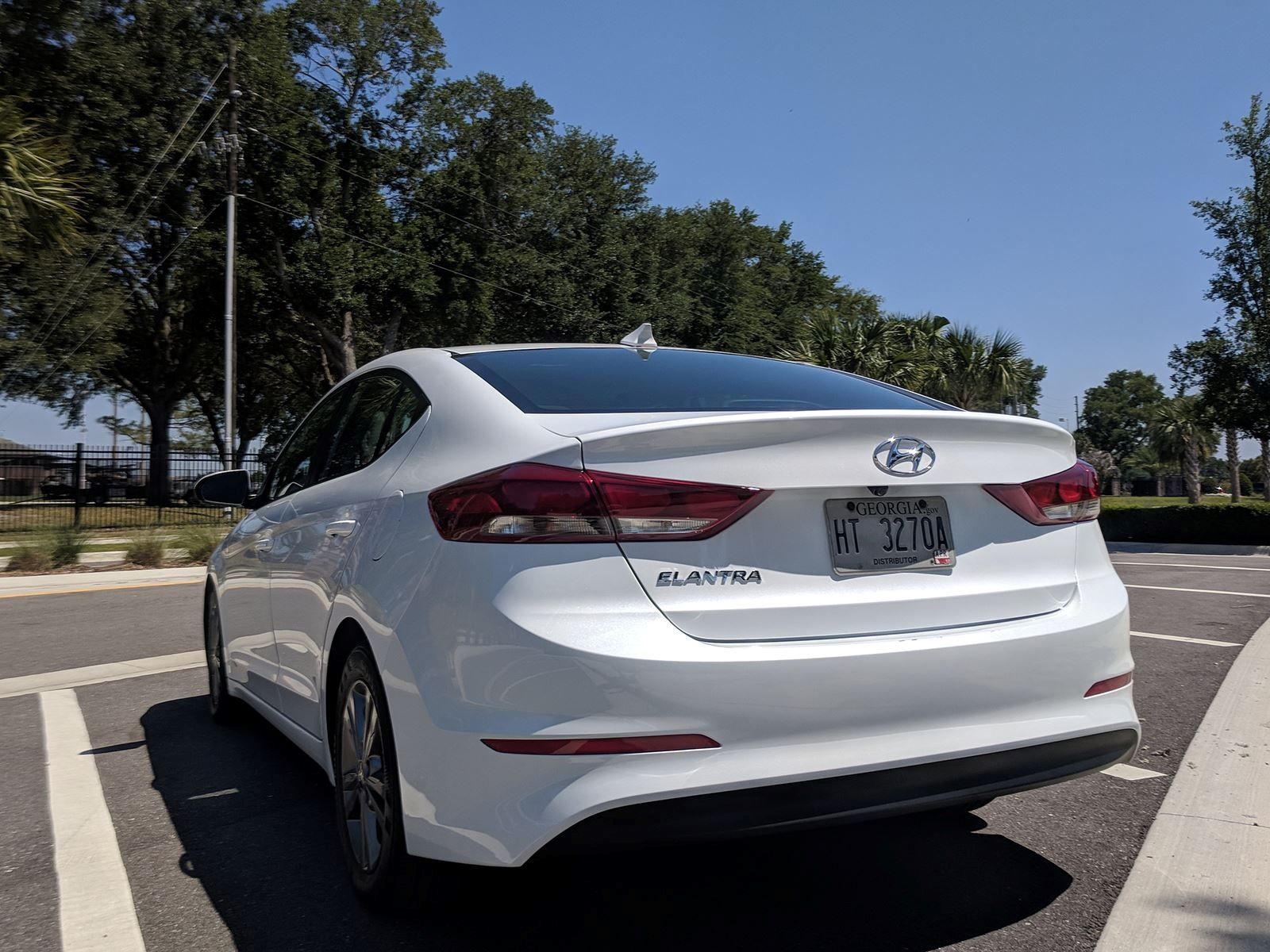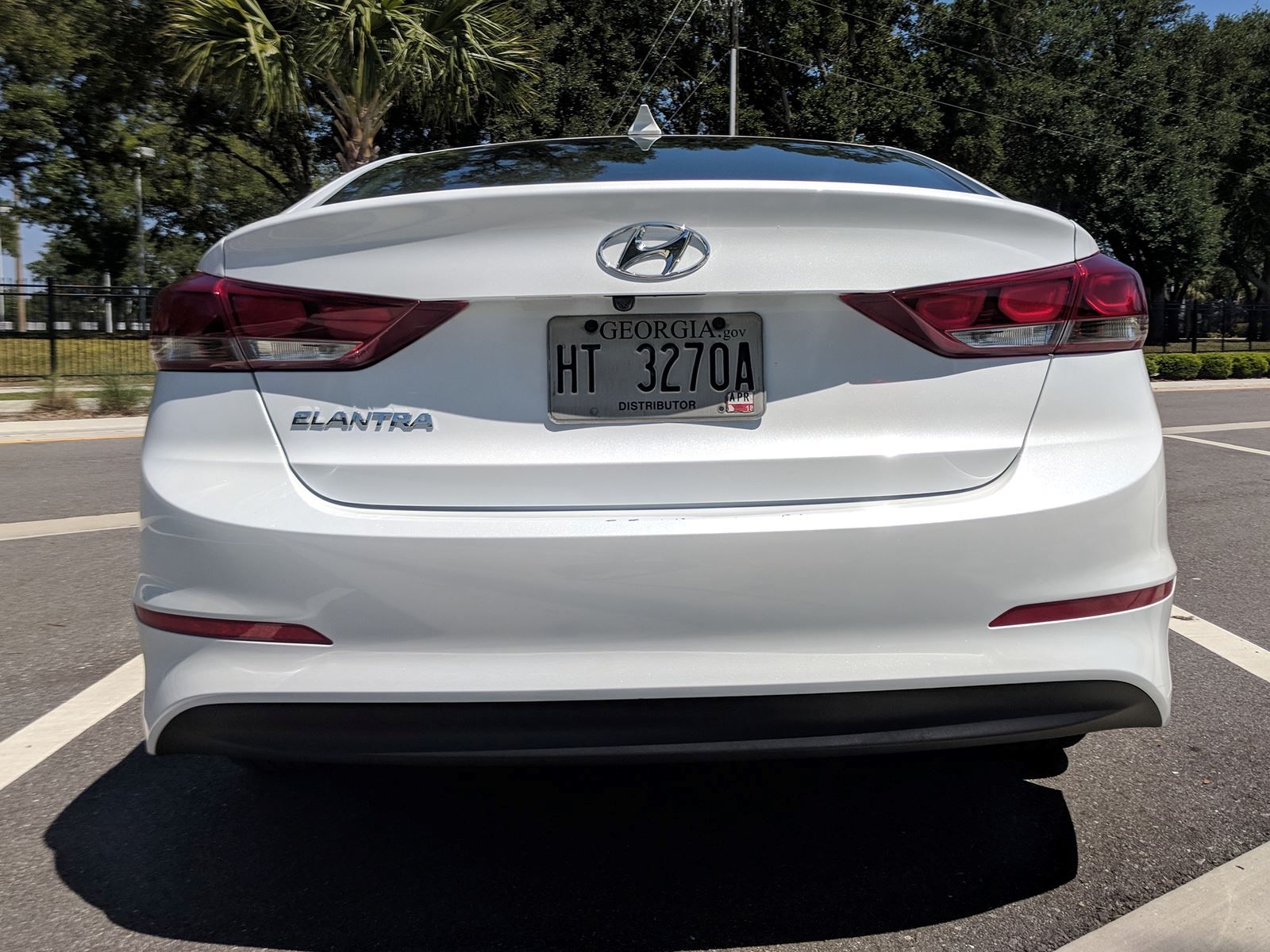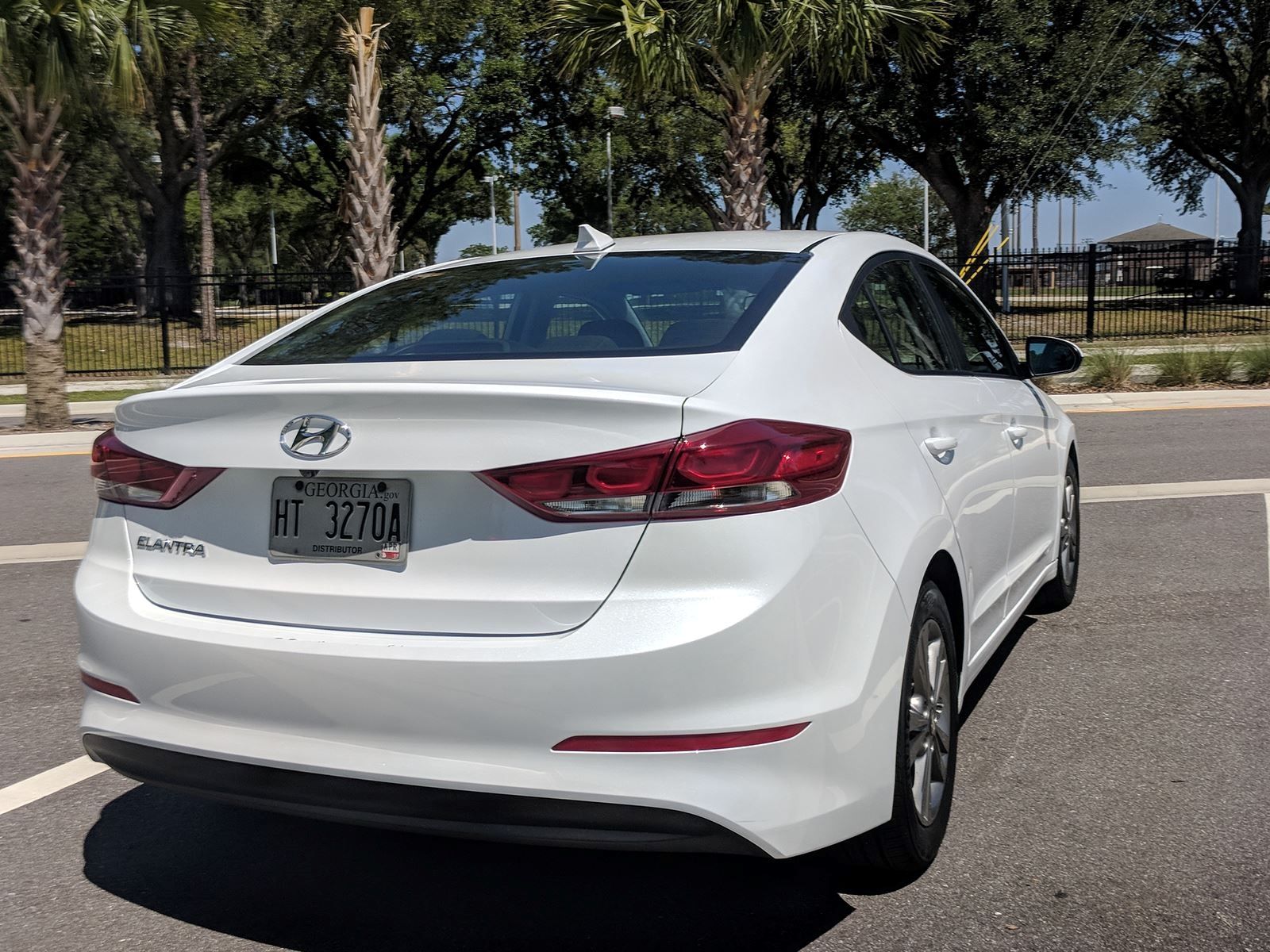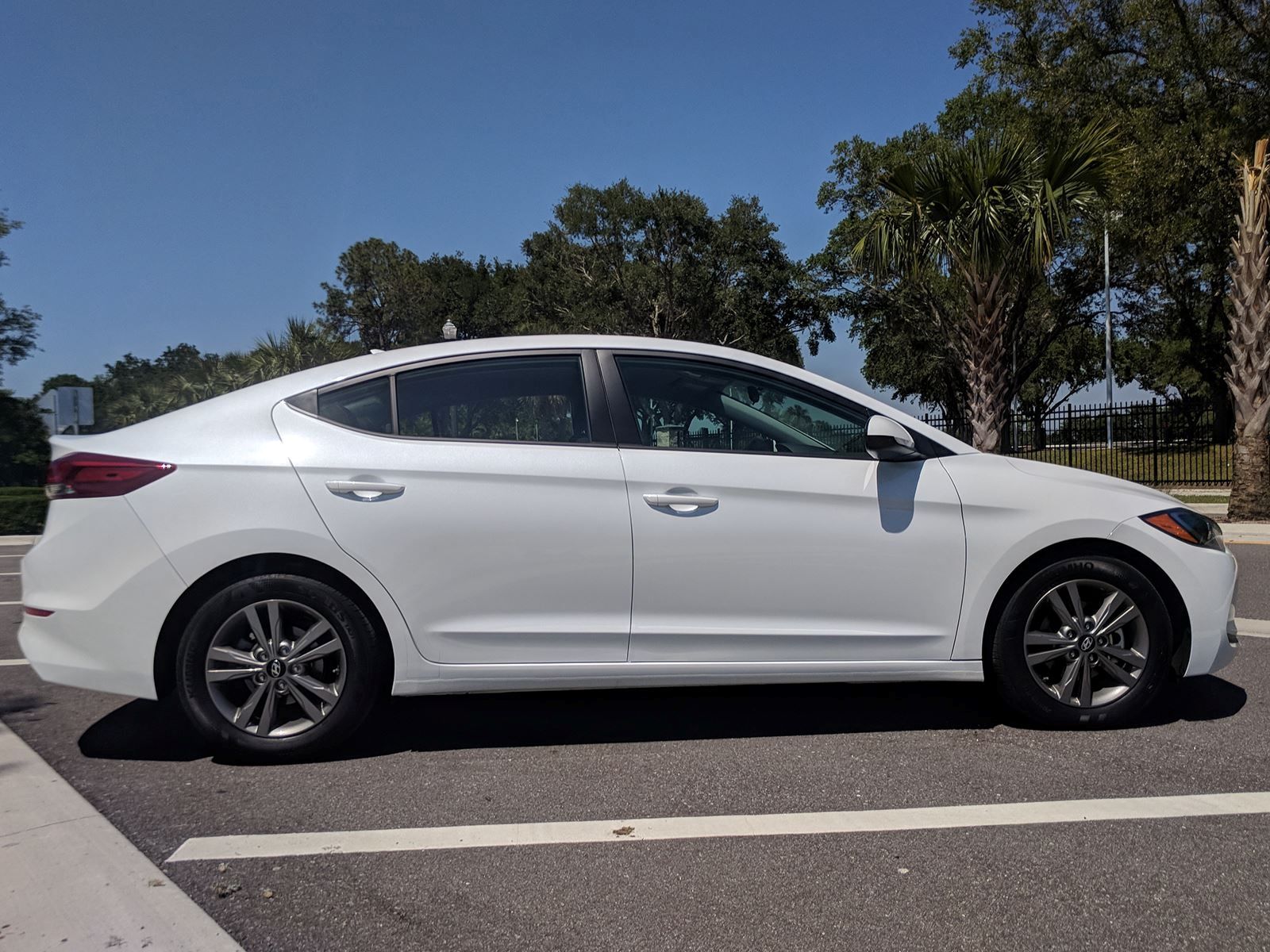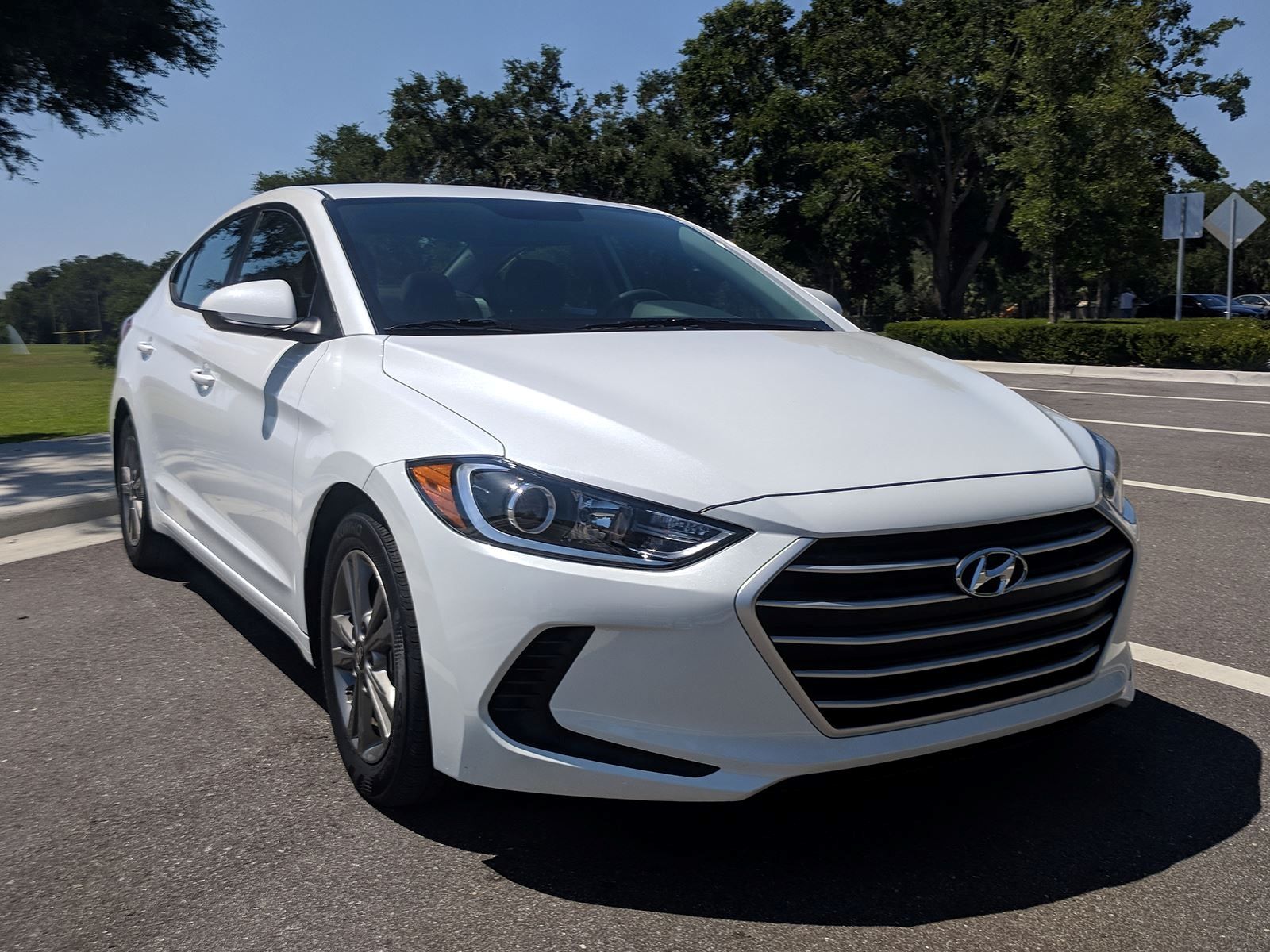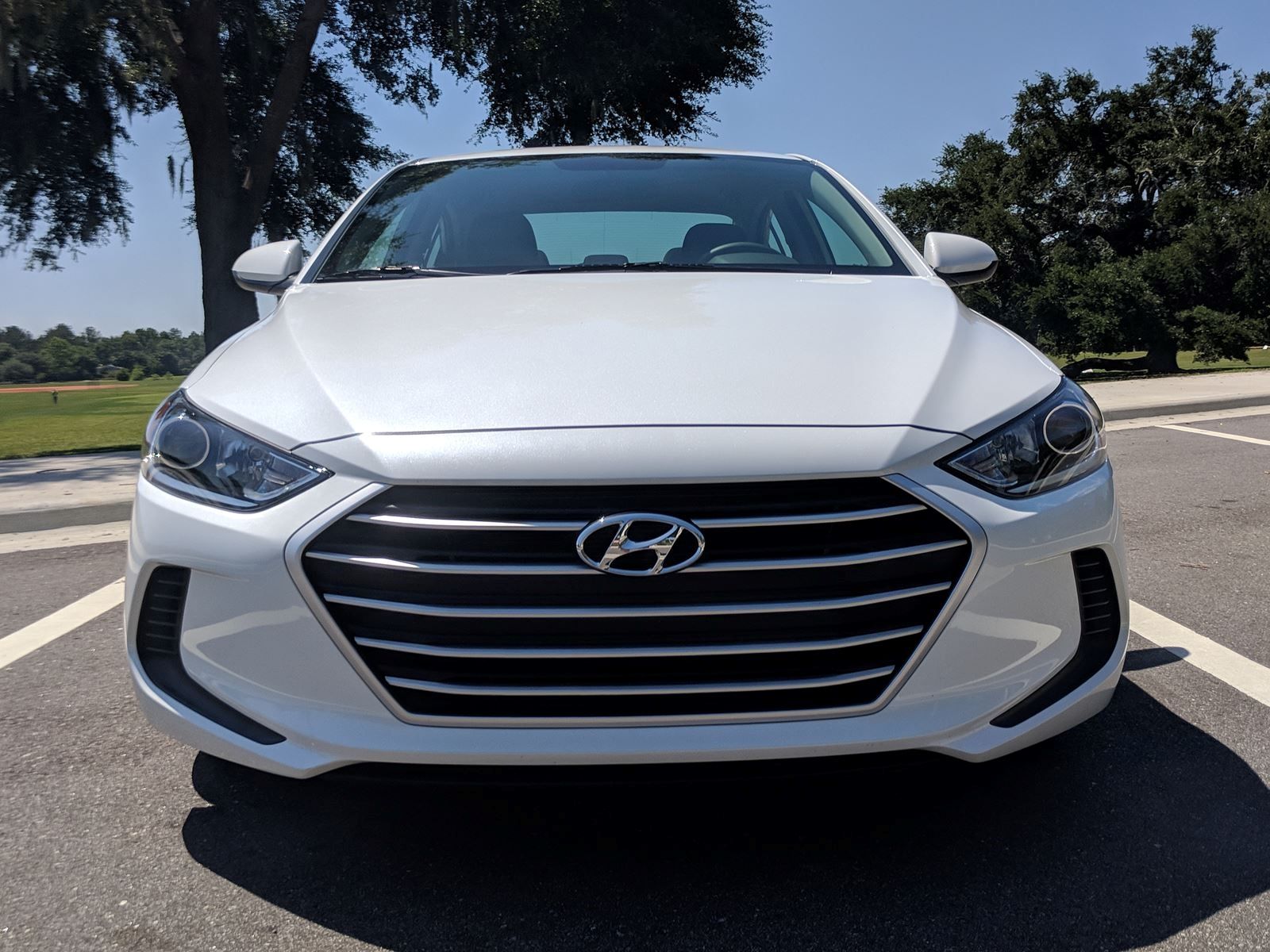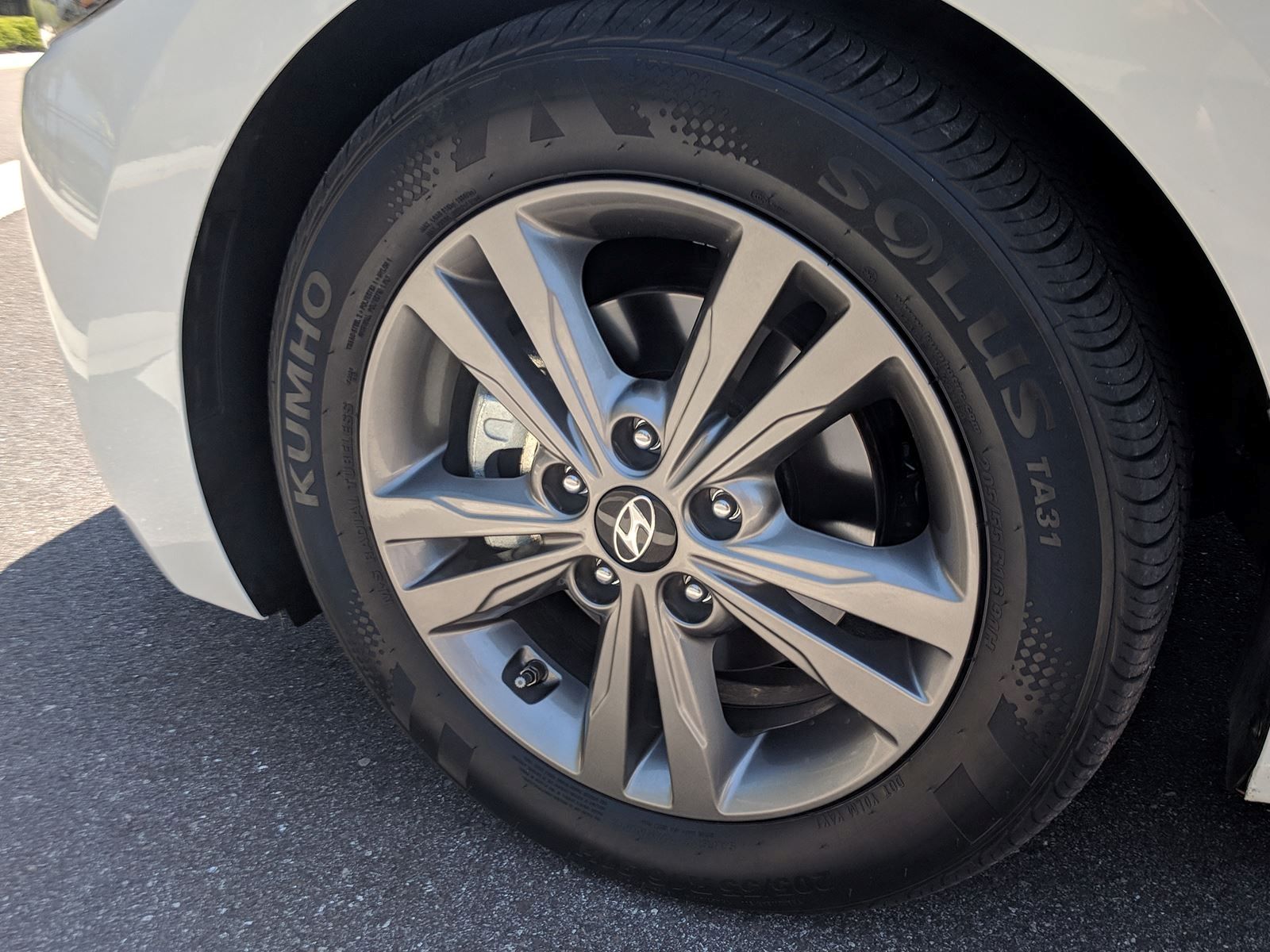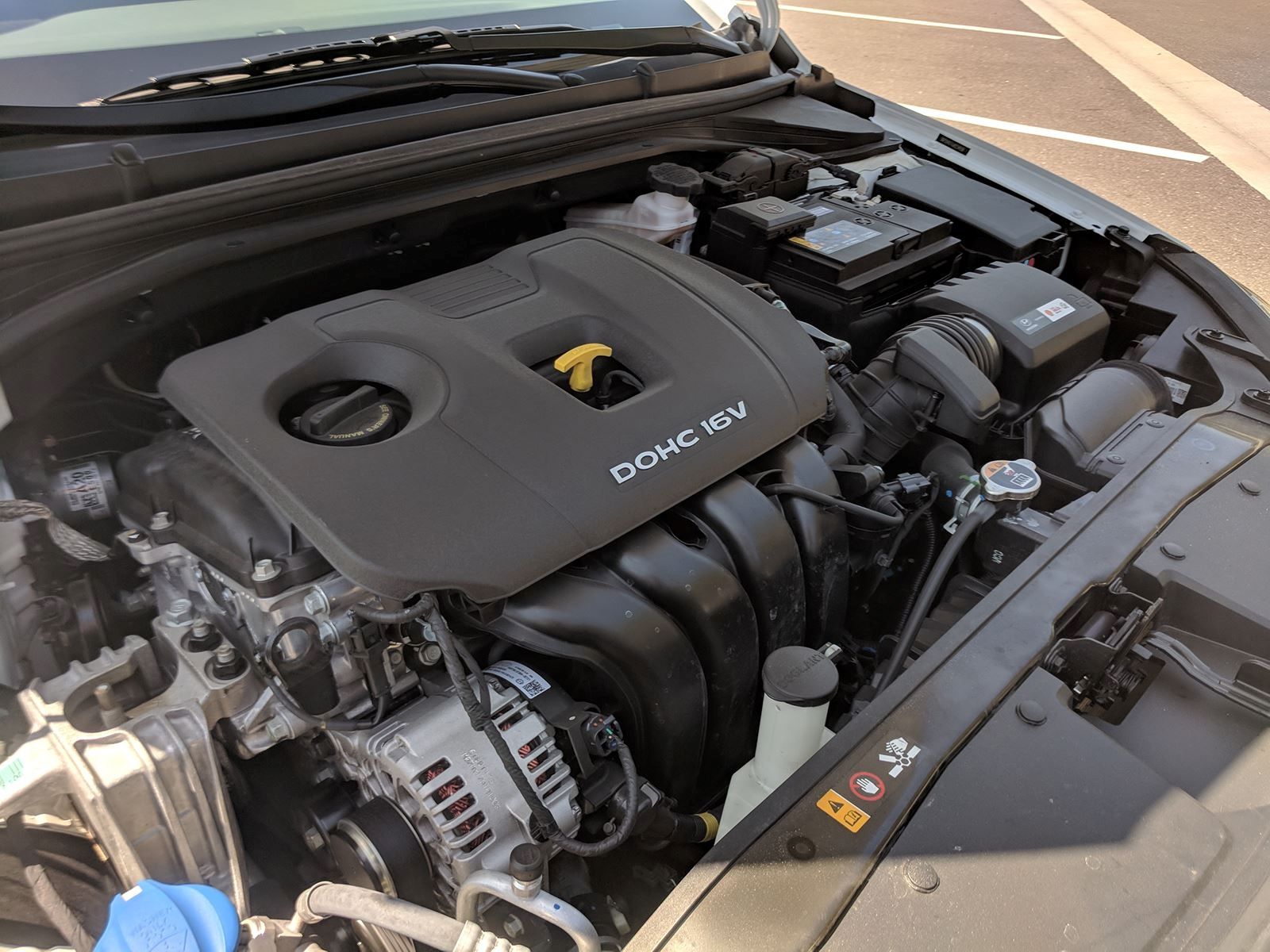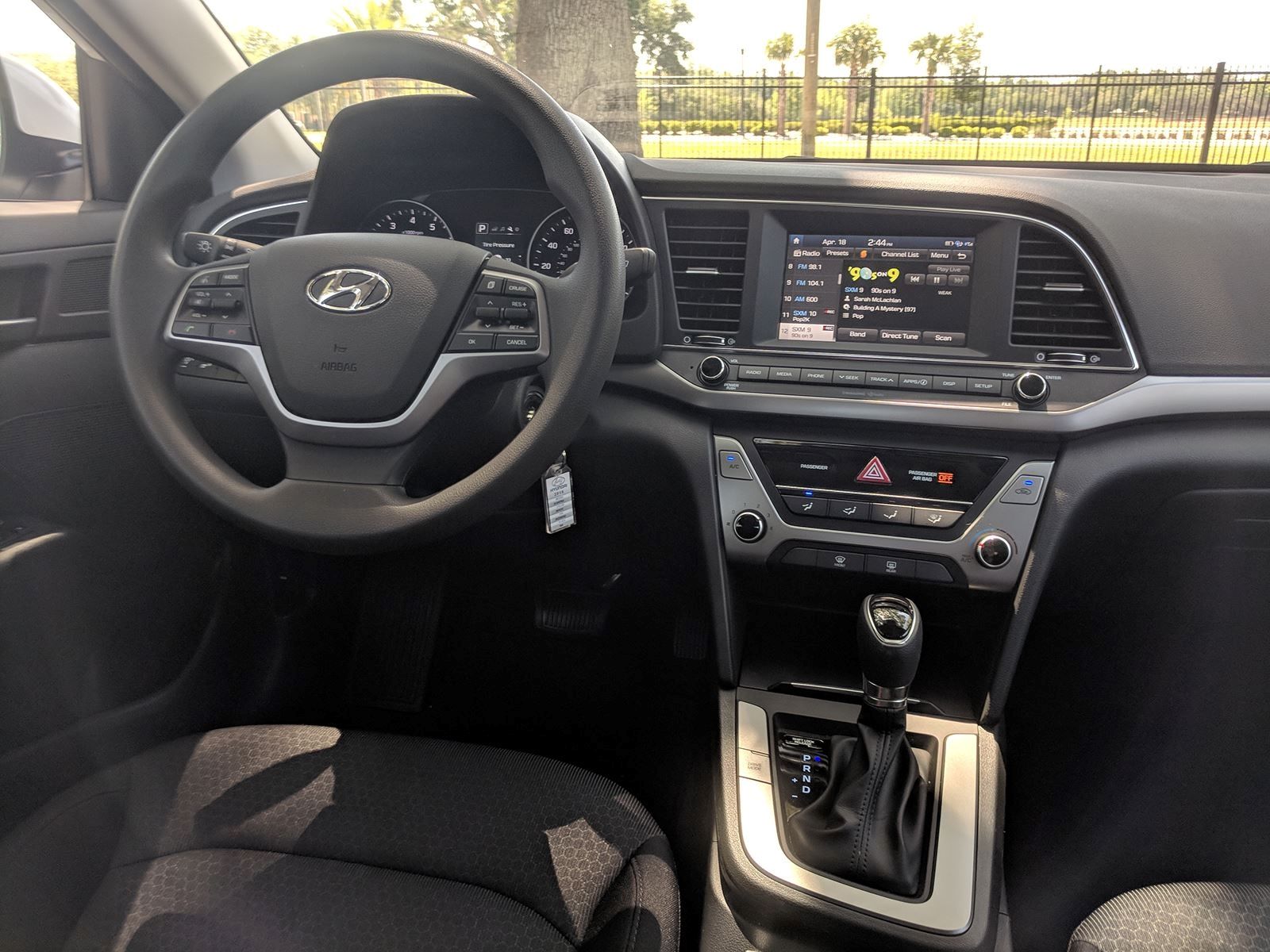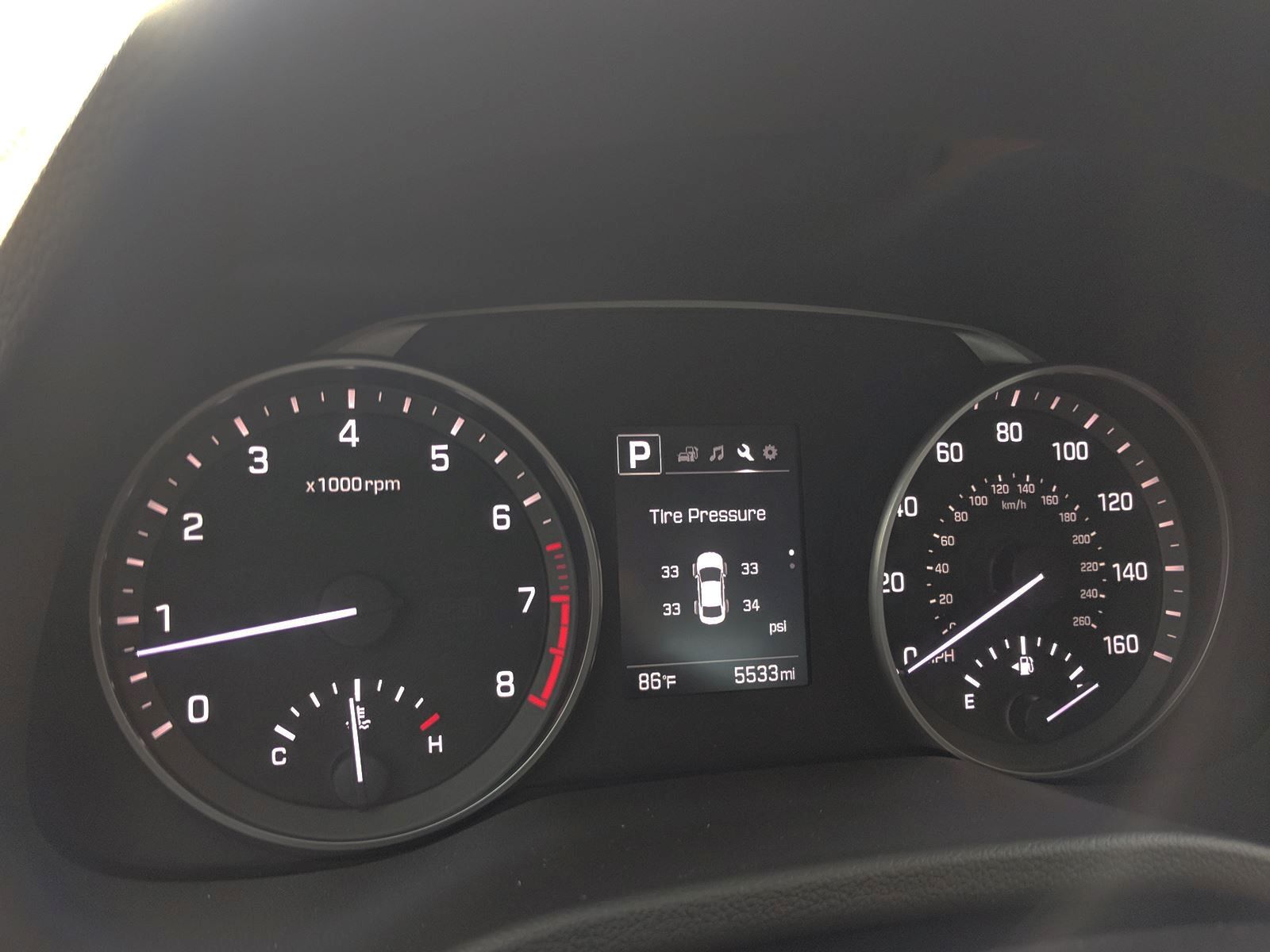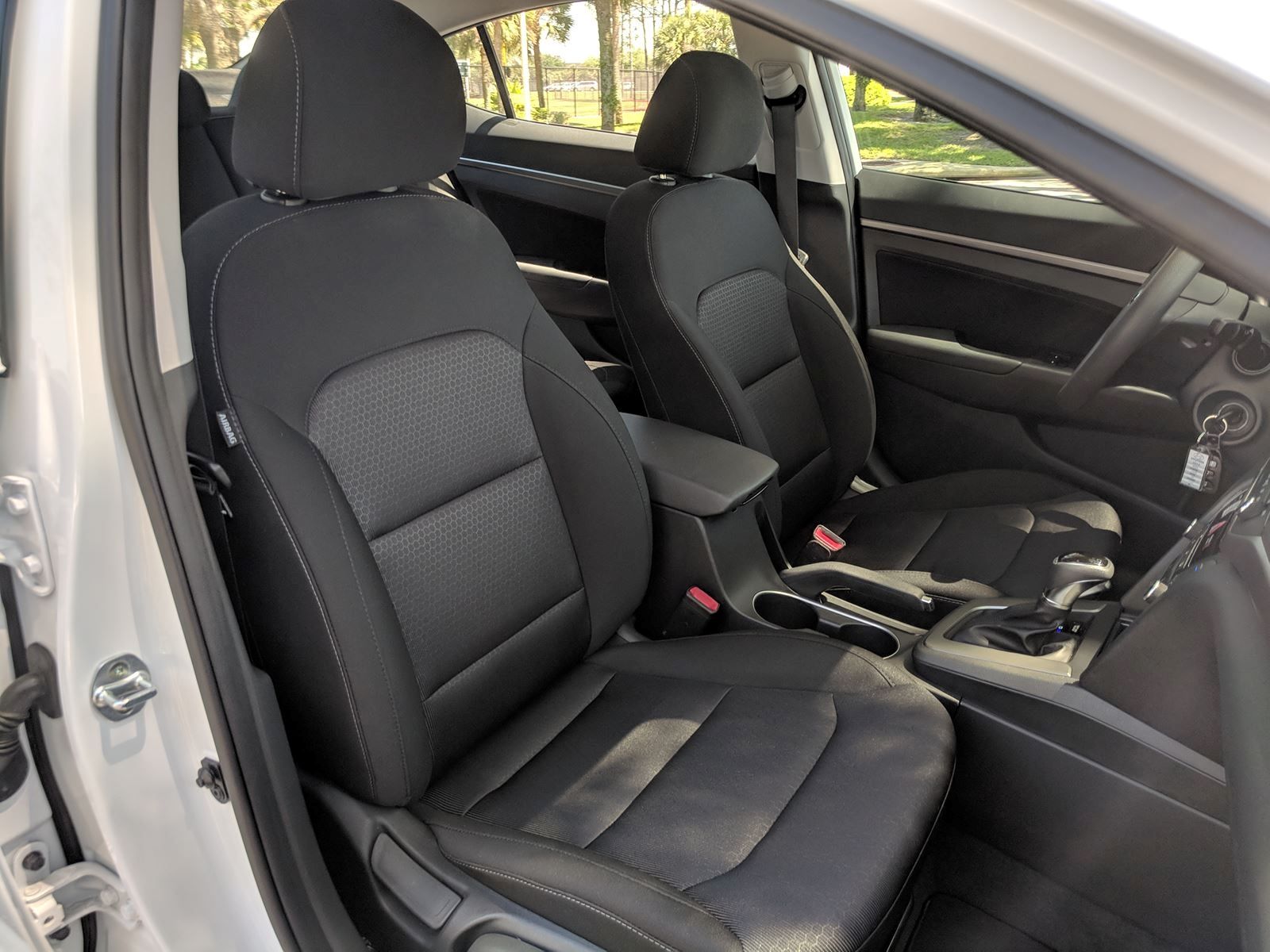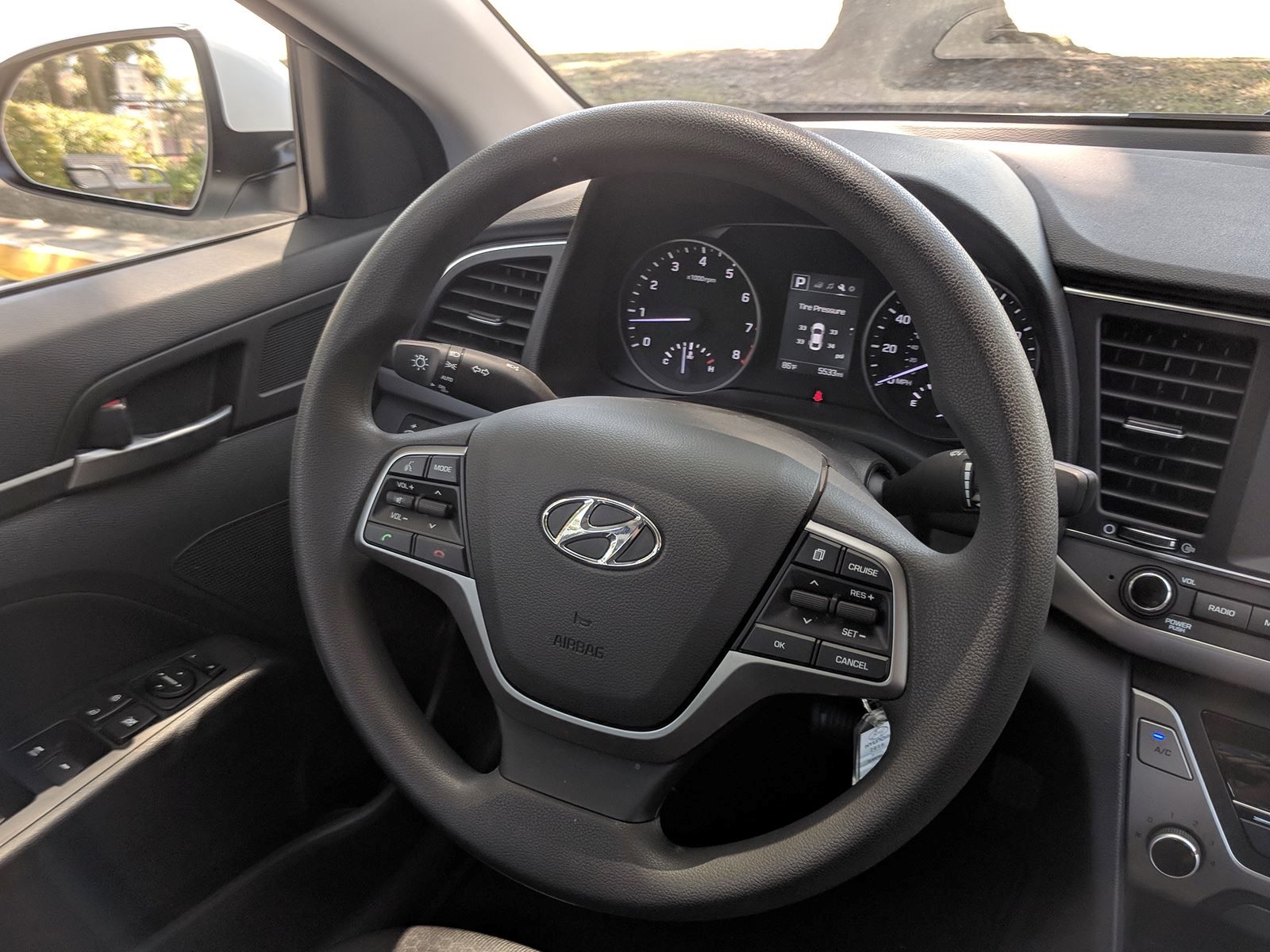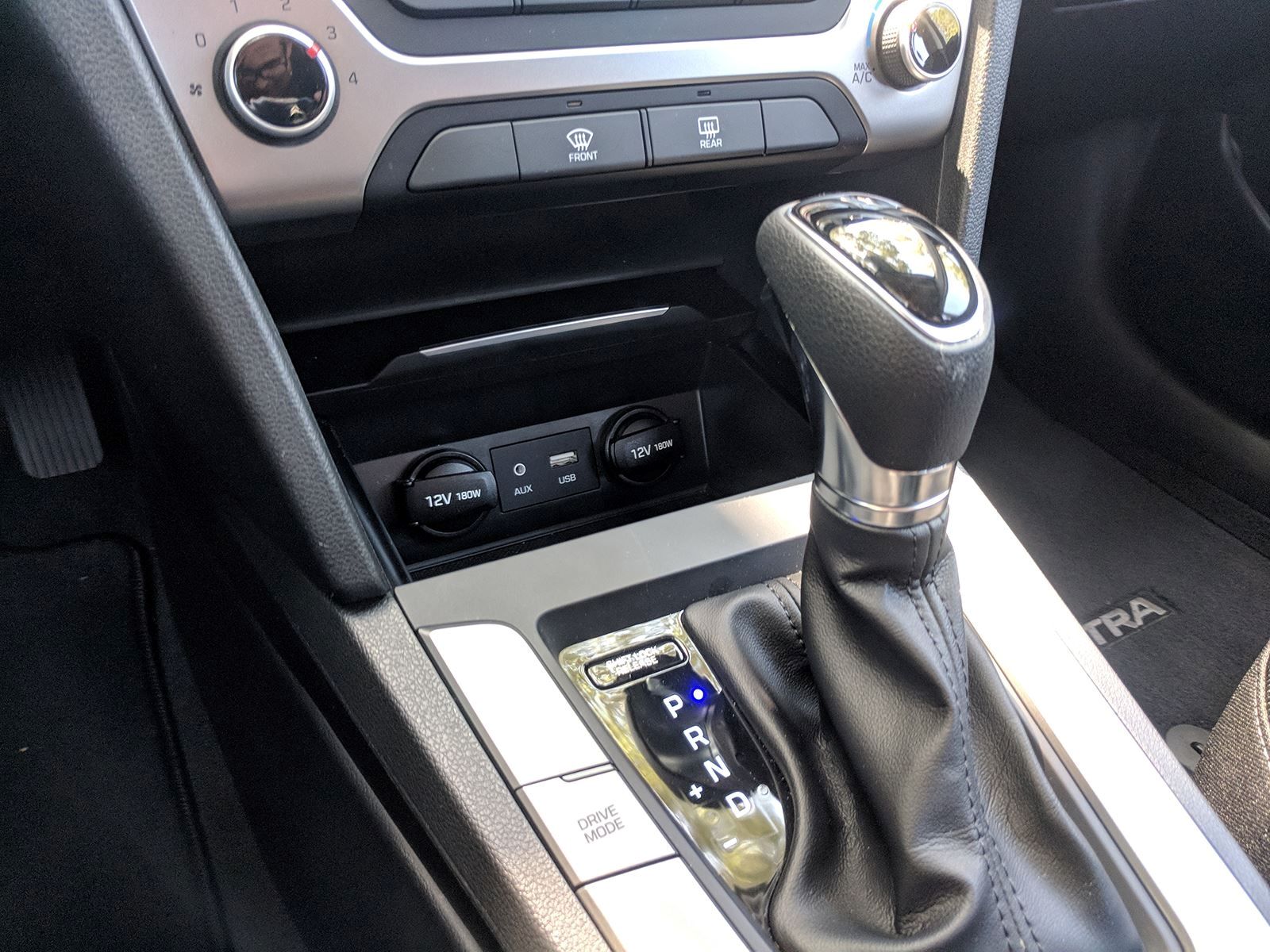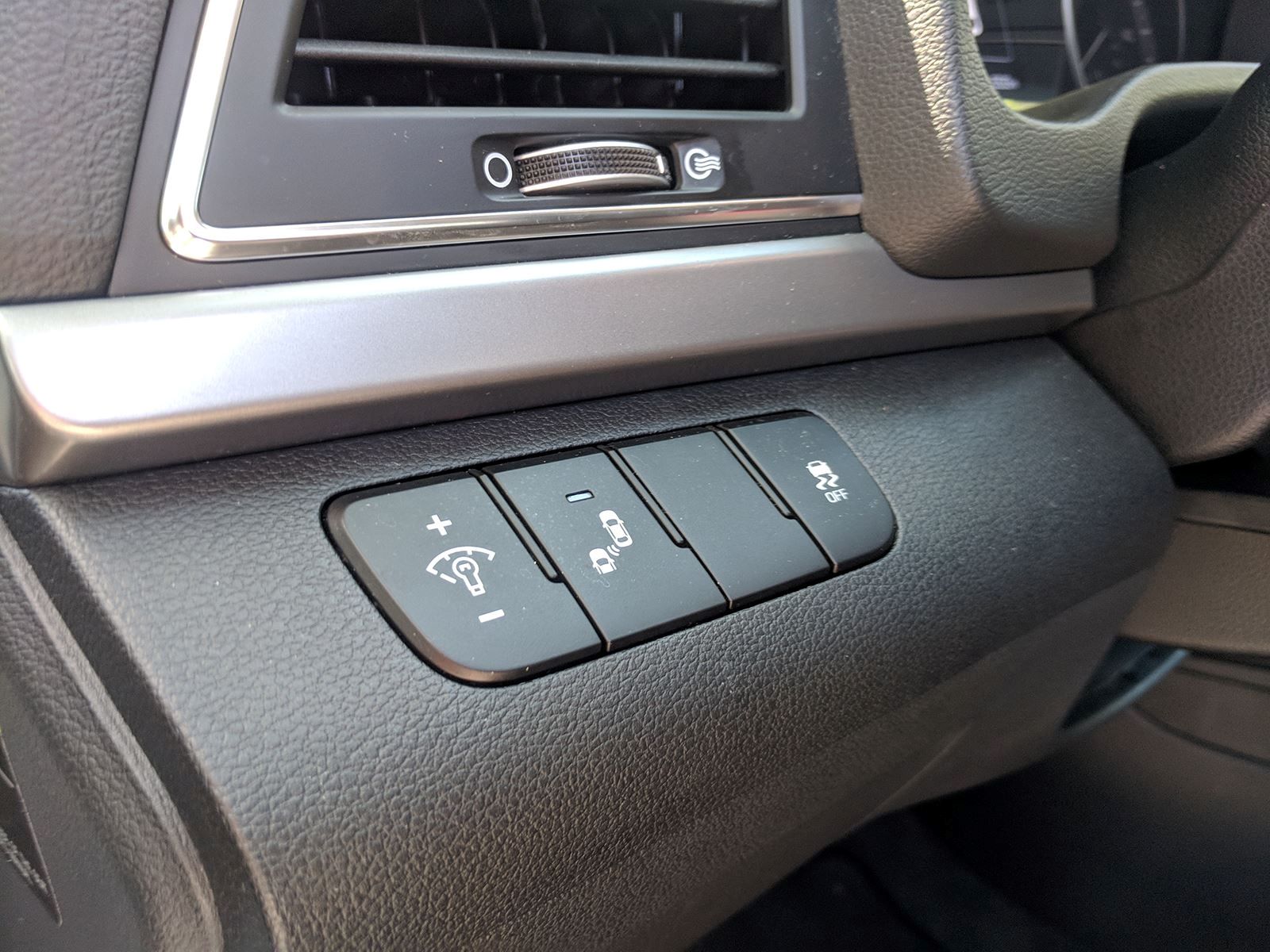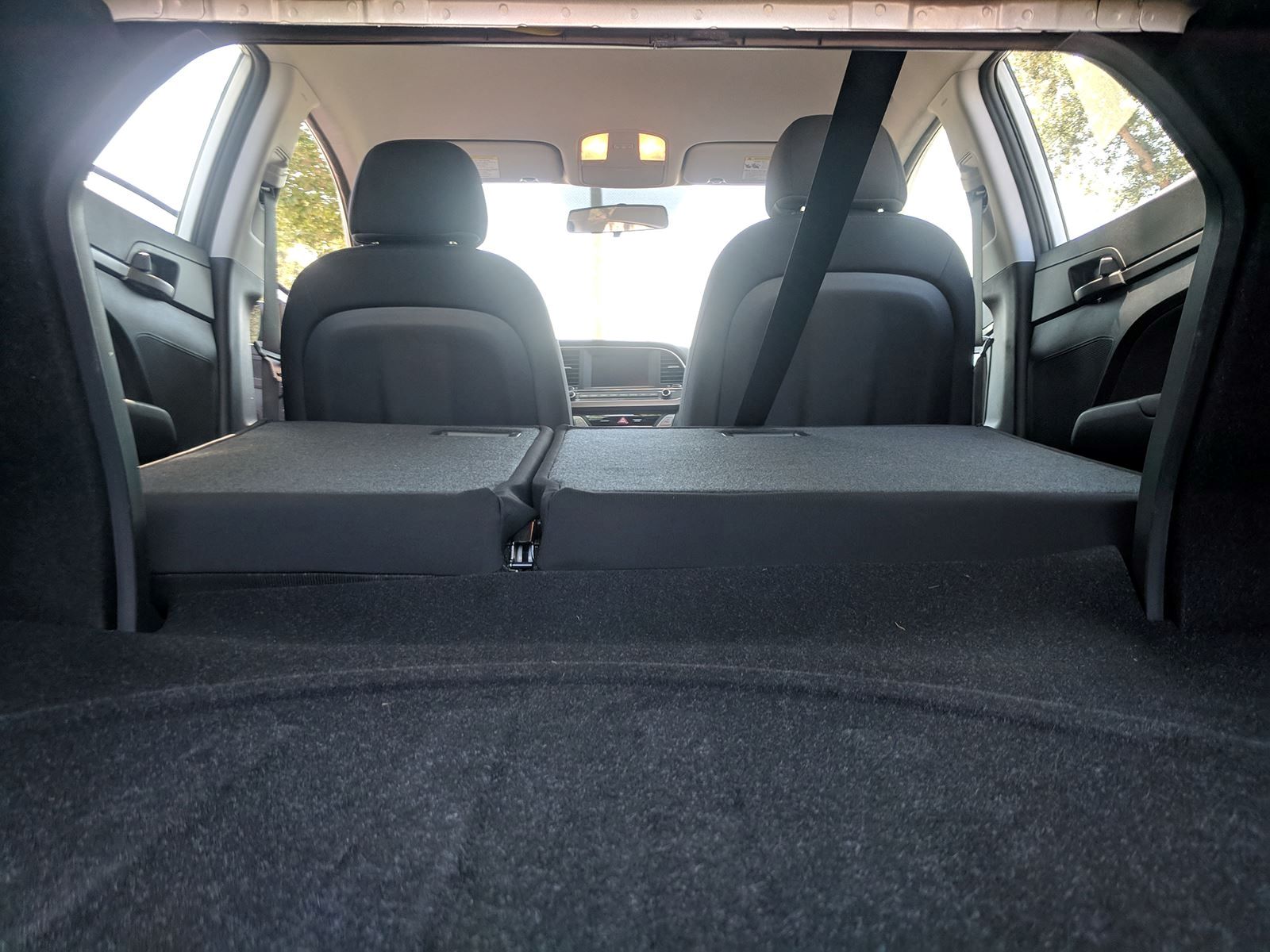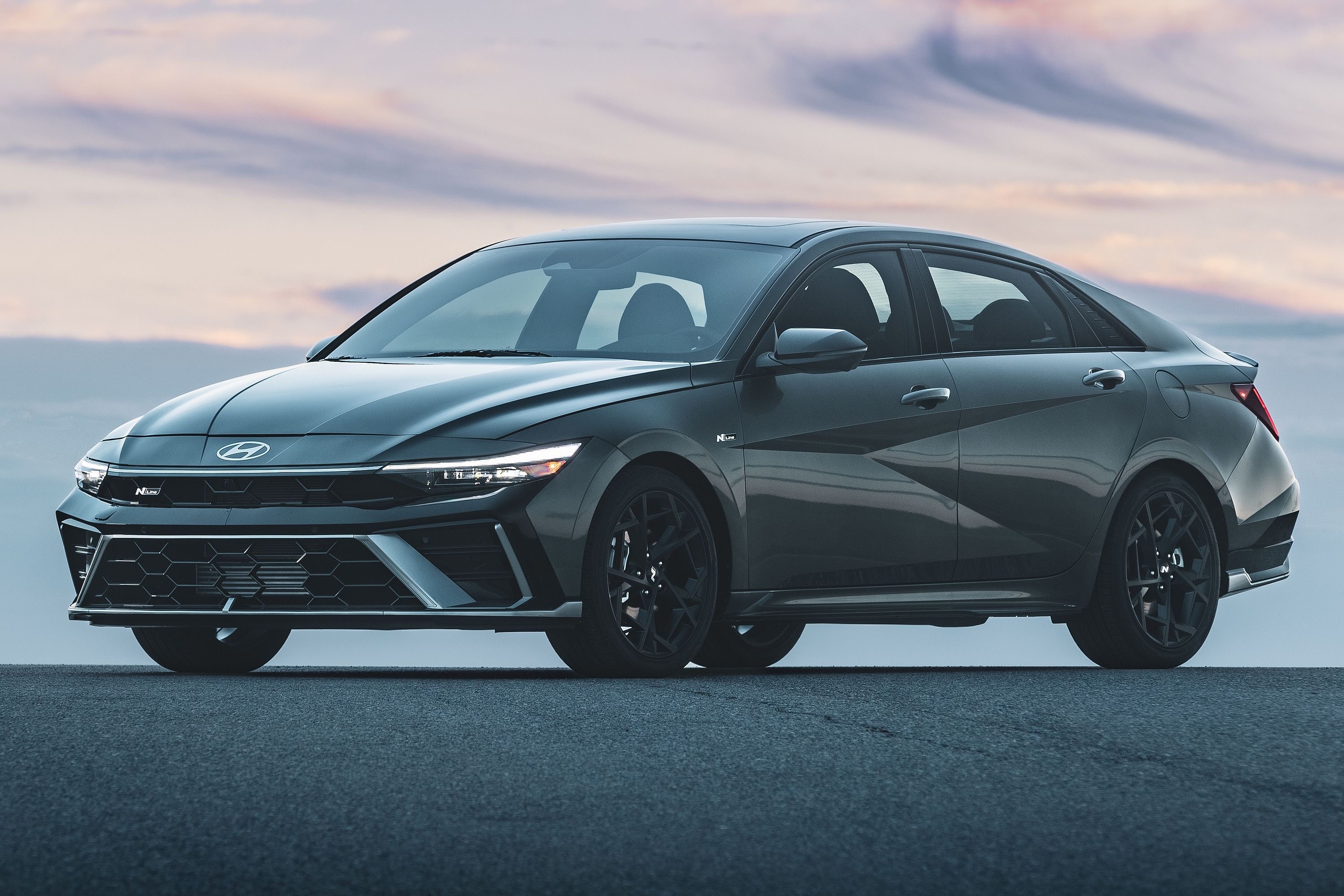
During my week with the 2018 Hyundai Elantra, this what I had to tell my friends and neighbors who are used to seeing me drive around in the latest and greatest automotive metal that, no, this was not a rental car. Perhaps it was the unassuming looks of the Elantra coupled with the plain white paint. Hyundai didn't even bother to name this color for 2018 – it's just "white." The Elantra is available in some much better colors such as Electric Lakeside Blue, which make the car look less like it belongs in a rental fleet.
The Elantra competes in the crowded compact sedan segment, which includes models like the Chevy Cruze, Ford Focus, Honda Civic, Kia Forte, Mazda 3, Nissan Sentra, Subaru Impreza, Toyota Corolla, and Volkswagen Jetta. Among this competitive set, it is easy to forget about the Elantra. My test model was the SEL trim, which is just one trim level above the base SE model. Base SE models start at $16,950 (before destination) with the six-speed manual, and $17,950 for the six-speed automatic. Hyundai made it simple and easy to order the Elantra with little to no options - just pick a trim, choose a color, and that's it.
The SEL trim costs $18,850, and adds a complement of standard features including: a seven-inch touchscreen display with Android Auto and Apple CarPlay, blind spot detection with rear cross-traffic alert and lane change assist, backup camera, rear disc brakes, 16-inch alloy wheels, heated mirrors, hood insulation, automatic headlights, 3.5-inch monochromatic cluster display, and rear cup holders. You heard that right, the base Elantra doesn't even come with rear cup holders. The SEL trim brings some important features to the Elantra, but it falls short in a number of key areas. For instance, this Elantra is one of the few cars I've driven recently with a physical key.
Most cars have switched over to push button starts with keyless entry, but the SEL still makes drivers bust out old school turnkey. The SEL also suffers from woeful interior materials. All of the controls are nicely laid out and look cohesive, but everything feels hard to the touch, including the steering wheel. The touchscreen helps make the Elantra feel more feature-packed, but it still utilizes basic elements such as manual climate controls. Luckily, spending $19,850 - just $1,000 more - than the SEL on what Hyundai calls the "Value Edition" can solve all of these issues. Let the rental fleets save the $1,000 on the SEL trim and treat yourself to the host of nice features found in the Value Edition.
The Value Edition still keeps the Elantra under $20,000 (before destination), while adding a ton of useful features including a sunroof, keyless entry with push button start, LED running lights, hands-free smart trunk, auto dimming rear-view mirror with HomeLink, leather-wrapped steering wheel and shift knob, heated front seats, and dual automatic climate control. Some automakers charge $1,000 just for a sunroof, so this package is worth its price and then some. No wonder why Hyundai calls it a value. It seems almost silly for Hyundai to offer the SEL, when the Value trim adds so many features for just $1,000.
The base engine motivating the Elantra is a 2.0-liter four-cylinder sending 147 horsepower and 132 lb-ft of torque to the front wheels through a six-speed manual or six-speed automatic. It is worth noting only the base SE model is available with the stick, unless you step up to the Civic Si-rivaling Elantra Sport for $21,800. To be honest, the six-speed manual likely wouldn't do much to improve the driving experience, and the six-speed automatic is more than competent. Shifts are buttery smooth under normal acceleration – even matching the smoothness of much more expensive "luxury" cars.
The automatic also achieves better fuel economy than the manual – 28-mpg city and 37-mpg highway compared to 26/36 for the manual. In my week with the Elantra I averaged close to 34 mpg, which was much higher than 27.7 mpg average we observed in the less powerful Hyundai Accent. The Accent's less powerful 1.6-liter engine likely needed to work harder just to get up to speed, resulting in lower fuel economy figures. Those who are looking for the most efficient Elantra should opt for the $20,500 Eco trim, which replaces the 2.0-liter engine for a 1.4-liter turbo mated to a seven-speed dual clutch.
The turbo engine makes less power than the 2.0 - just 128 hp - but achieves higher mpg figures of 32-mpg city and the magic 40-mpg figure on the highway. Speed freaks will want to opt for the Elantra Sport, which is powered by a 201-hp 1.6-liter turbo mated to a six-speed manual or seven-speed dual-clutch. My money would easily go to the Sport model, which transforms the Elantra from an average runabout to a bona fide Civic Si and Volkswagen GTI competitor. Unfortunately, the regular Elantra models lack the fun and driving pleasure of the Sport. The steering is extremely vague, offering no feedback to the driver, and the engine lacks any charisma.
Power feels adequate under normal circumstances, but passing other cars in the Elantra felt more like a chore rather than a pleasurable activity. 0-60 mph takes around 7.8 seconds, but the Elantra just never delivers on fun. Other competitors in this segment manage to offer an enjoyable driving experience even with underpowered engines, but the dead steering in the Elantra makes it difficult to derive enjoyment. The car can be toggled into a Sport Mode, which keeps the engine ready by shifting down a gear, and adds weight to the steering. I've witnessed this trick done well in models like the Kia Soul Turbo, but in the Elantra it feels insincere.
The steering becomes heavier, but it doesn't add any more feedback and mainly makes the car feel tiresome to drive. There is also an Eco mode, which dials back the shift logic and makes the car feel painfully slow. I mostly drove around in normal mode, and still achieved stellar mpg and range. Even after driving over 200 miles in a week, the center display still indicated over 200 miles of range left in the tank. The Elantra may not be fun to drive, but it is very comfortable. The light steering made for easy parking maneuvers and a relaxing driving experience. Even over rough bumps, the Elantra's torsion beam rear and McPherson strut front suspension with coil springs and gas shocks rode beautifully.
Hyundai made extensive changes to the Elantra's rear suspension for the 2017 model year, and it seems to have paid dividends. In terms of ride comfort, there are plenty of luxury sedans that could learn a thing or two from the Elantra. Overall interior is well laid out, but there are too many hard plastic surfaces. Rear seat occupants are treated to 35.7-inches of legroom, which feels like plenty. Unfortunately the Elantra is beat out in this category by competitors like the Honda Civic and Toyota Corolla. Fortunately, the Elantra has a practically flat floor in the rear, which makes it acceptable to sit in the middle seat.
Unfortunately, the middle seatback is rock hard due to the placement of the 60-40 split to access the trunk. Trunk space is adequate with 14.4 cubic feet on offer, and the hatchback Elantra GT serves up 24.9 cubic feet of space. This Elantra isn't the largest or most commodious car in the segment, but it doesn't feel cramped. The Elantra loses out in many categories including styling, driving pleasure, and features. Models like the Honda Civic and Mazda 3 are more enjoyable to drive at a similar price, and I think they look more attractive as well. This current generation Elantra is an inoffensive design, but I prefer the curvier model from 2016.
Higher trim Elantra models are more attractive with larger wheels and nicer trim pieces, but the SEL trim is simply too spartan for most buyers. The next time you go to rent a car, the Elantra SEL trim will likely be sitting on the lot thanks to its low buy-in price. Given the level of comfort the Elantra SEL offers for less than $20,000, it makes a fine rental car. Rental fleets will be happy to save $1,000 per car, but individual buyers should spend extra to get the Value model. For a personal purchase the decision is clear – leave the SEL for the rental fleet, buy the Value Edition.

